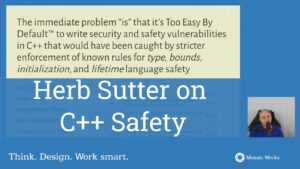How does a Scrum Master’s calendar look like for one Sprint?
We have previously seen what are the main responsibilities of a Scrum Master. In this post I would like to take a closer look at the agenda of a Scrum Master. How does their schedule look like when wearing the four hats of team facilitator, performance guardian, servant leader and change agent? Do we need a full time Scrum Master or is it a part time job?
To make my task easier, I’ve asked a friend to let me snoop in her calendar. Alina works in a company of about 35 people and they have 3 development teams working on different products. She is the full-time Scrum Master of one team. The company started adopting Scrum about a year ago and the people have gradually shifted to an agile mindset. Below, you can see Alina’s schedule for the last sprint (click to enlarge it).
Full time Scrum Master: A two-week calendar
Let’s take a look at Alina’s meetings. The dark blue ones should be very familiar so I won’t go into detail. They are the mandated Scrum ceremonies: the Sprint Planning, Backlog Refinement, Sprint Review and Sprint Retrospective.
In light blue you can see a series of meetings with people from outside of the development team:
- In the first Wednesday, Alina reviews the release status with the Product Owner. They take a look at what is completed so far, what’s left and at the release burndown to see if they are ahead or behind schedule.
- The next day, Alina attends the company’s bi-weekly all hands meeting.
- On Friday, she meets with the manager of the operations team. Together, they review the customer incidents from the past two weeks and any requests for her team from the ops engineers. Any impediments she feels they could tackle get added to the impediment backlog.
- In the second week, before lunch on Wednesday, Alina hosts her company’s Scrum community of practice. About 6-8 people attend it, including Scrum Masters, managers and sometimes the VP of Engineering. They discuss their agile transition and what items need to be addressed across the teams.
- After lunch the same day, Alina has two one-hour sessions with the development manager and testing manager. She provides feedback on the status of the release, discusses risks and any need for training for her team members.
Light green is used for tasks that will develop the skills and productivity of the team:
- Every sprint, Alina makes sure to spend at least one hour in one on ones with every team member. She makes sure they are aligned with the company vision and are happy to be part of that team. Sometimes she needs to handle small conflicts between developers and testers, but it’s never a big issue. Every now and then a colleague asks for clarifications about Scrum or the engineering practices (“Why again are we doing unit testing?”).
- Once every sprint, the team runs a coding dojo which develops their skills in one area. For example, in a recent sprint the technical leader wrote some code that deals with threads, their team’s weakest area.
- There’s also an hour scheduled in which Alina plans to discuss with her team where they would like to celebrate the upcoming release and make a few phone calls to restaurants to book a table.
The tasks related to improving the working system are captured in dark green. Quite possibly, these are the most important:
- After every retrospective, Alina has one or two action items. It might be updating the Definition of Done on the team’s wiki and in their workspace or configuring Jira (their task management system) in a new way.
- Her biggest duty is to remove impediments that block or slow the team down. In this sprint she had to negotiate with management on behalf of the team. They are trying to convince their director to eliminate the time-consuming weekly report which is a legacy of their waterfall years.
- On the first Friday, Alina met with a developer and a tester to improve their technical practices related to automated tests. The regression suite was getting slower and slower so the team members were only running it over night. Together with her colleagues, they refactored a bit of code and reduced the total run time by 10 minutes. Not much, but Alina likes to think that “every little bit helps”.
- In the second week of the sprint, Alina takes care of two maintenance tasks. She cleans up the information radiator (take a look at both the whiteboard and Jira to make sure everything is up to date) and updates team charts (an Excel file with team metrics).
There are a few other tasks marked in orange and yellow:
- The Daily Scrum meeting is followed by 45′ in which Alina reads the latest articles from the blogs she follows. She is a big fan of Mike Cohn and Rachel Davies.
- A mid sprint check in which the team looks at the Sprint Burndown and decides if they should make some changes to the Sprint Backlog.
- Preparing for all the meetings (creating the agenda, confirming it with the stakeholders etc.).
After all is said and done, Alina has about 6-10 hours every sprint in which she can contribute to Sprint tasks. A former tester, she enjoys taking the app for a spin in exploratory testing sessions.
You might have remarked a bunch of “Other” slots in purple. These are Alina’s buffer that allow her to be very responsive during the Sprint. For a long time she was the team’s bottleneck, because her schedule was always full. Whenever somebody had an unexpected need, they had to wait two or three days to get help. After reading about queuing theory, Alina understood that she needs to build slack into her schedule, so she never plans more than 80% of her time.
Show me the numbers
You might be interested in a statistical breakdown of Alina’s work. I know I was.
| Sprint ceremonies | 10h | 12.5% |
| Prepare meetings | 10h | 12.5% |
| Daily&Mid Sprint Check | 3h | 3.8% |
| RSS | 5.25h | 6.6% |
| Help with tasks | 6.75h | 8.4% |
| Work with other people | 9h | 11.3% |
| Improve system | 9h | 11.3% |
| Develop skills | 9h | 11.3% |
| Other | 18h | 22.5% |
| Total | 80h | 100% |
And here’s the pie chart you’ve all been waiting for:
Different Scrum Masters, different activities
Alina is fortunate to be working in a small company that doesn’t have a complex structure. In bigger companies, I’ve seen Scrum Masters also have in their calendar:
- When the product is being built in multiple teams: daily Scrum of Scrums, joint demos and retrospectives, cross-team backlog synchronization meetings
- When the team has full ownership of a SaaS product: review usage metrics and A/B testing results
- Plan, organize and debrief Innovation Games sessions with the Product Owner and their customers
- Manage external contractors (outsourcers)
- Review with the team the wireframes provided by a shared expert (the UX designer)
- Negotiation meetings with various stakeholders that try to push work into the team
- Discussions with the HR manager to align the career paths and reward systems with agile principles
Full time or part time?
If it were my call, the decision would be simple: full time Scrum Master. You can see from Alina’s list that even in a small company there’s plenty to do. In larger companies, with multiple interdependent teams, it becomes an obvious choice.
That being said, I’m not naive. Most companies I’ve seen either use a Scrum Master for two or even three teams or have him also do development tasks. If you choose this option, please take a good look at the list above and see who can execute those tasks. Your team leaders and managers are usually the first suspects.
The other situation in which I’m comfortable recommending a part-time Scrum Master is when the team has at least 2 years of agile experience. That’s my rough estimate for how long it takes to develop a well-oiled team. This type of team manages naturally a lot of the Scrum Master’s responsibilities.
Are you a Scrum Master? Let me know in the comments what types of tasks you do and how much time they are taking.
Man designed by Moh Kamaru from the Noun Project













I also advocate full-time SM for non-mature team/organization.
However, I see Alina’s calendar as a calendar of a a task usurper. What if she fall sick?
In me being a full-time SM, I spent more time on organization and inter-team improvements. You call it “improve the system”
Pavel, I’m afraid I don’t know what a “task usurper” is. Could you elaborate?